John Surman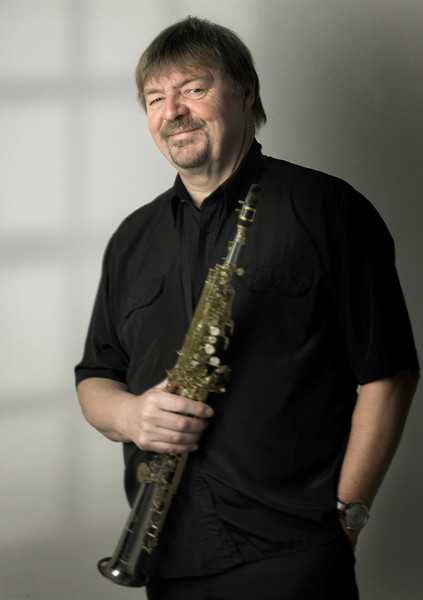 | ||
| Allmusic Biography : John Surman was one of the very few saxmen in England to find a significant rock audience during the late 60s, playing gigs regularly at venues like the Marquee Club in London. Also a clarinetist of some renown, and no slouch on keyboards either, the atmospheric sounds that Surman creates on his horns have been a major asset to the ECM label ever since the late 70s; but, before that, he was an extremely prolific artist on Deram, Futura, Dawn, and Island, cutting seven solo albums between 1968 and 1974 on those mainstream pop-oriented labels, as well as recording with Morning Glory on Island. One of Englands top jazz players across many decades, Surman is particularly strong on the baritone. Surman played in jazz workshops while still in high school. He studied at the London College of Music and London University Institute of Education in the mid-60s, played with Alexis Korner and Mike Westbrook until the late 60s, and recorded with the latter until the mid-70s. He was voted best soloist at the 1968 Montreux Festival while heading his band. Surman worked with Graham Collier, Mike Gibbs, Dave Holland, Chris McGregor, and John McLaughlin in the 60s, and toured Europe with the Kenny Clarke/Francy Boland big band in 1970. Surman toured and recorded with Barre Phillips and Stu Martin in the late 60s and early 70s, and again in the late 70s, adding Albert Mangelsdorff to the group. They called themselves the Trio, then Mumps. Surman played with Mike Osborne and Alan Skidmore in the sax trio S.O.S. in the mid-70s. He also collaborated with the Carolyn Carlson dance company at the Paris Opera through the mid- and late 70s. Surman recorded with Stan Tracey and Karin Krog, while working with Miroslav Vitous and Azimuth. He led the Brass Project in the early 80s, and played in Colliers big band and Gil Evans British orchestra. Surman toured with Evans again in the late 80s. He began recording as a leader for Pye in the early 70s, and did sessions for Ogun and ECM. Surman continued recording in the 80s, mostly for ECM. He worked with Terje Rypdal, Jack DeJohnette, Pierre Favre, Bengt Hallberg, Archie Shepp, Warne Marsh, and Red Mitchell, among others. Surman has made many recordings for ECM, spanning from free-form to mood music, and he remains one of the labels most consistently stimulating artists. In the 21st century, though he has recorded infrequently, many of Surmans earliest and ECM recordings have been reissued to considerable acclaim, bringing a fresh focus on his considerable reputation. Arriving in 2012, Saltash Bells (a completely solo effort) was conceived as a collaboration with Norwegian filmmaker and photographer Odd-Geir Sæther. The music and images explored the English West Country where Surman grew up. The album was globally acclaimed and linked to earlier works such as Upon Reflection (1979), Withholding Pattern (1984), Private City (1987), and The Road to Saint Ives (1990) as quintessentially "English" works. But Surmans work could not be confined by convenient definitions because of his long history of working with musicians from other countries and cultures. He met Brazilian jazz pianist Nelson Ayres (Airto Moreira, Milton Nascimento, and Banda Pau Brasil) while working on a Marlui Miranda album. In Oslo, Surman came to know and appreciate expatriate American vibraphonist Rob Waring. These three musicians entered Oslos Rainbow Studio in the summer of 2017 to record a program of Surmans originals -- as well as Ayres "Summer Song" -- with producer Manfred Eicher. The recording was released the following January as Invisible Threads. | ||
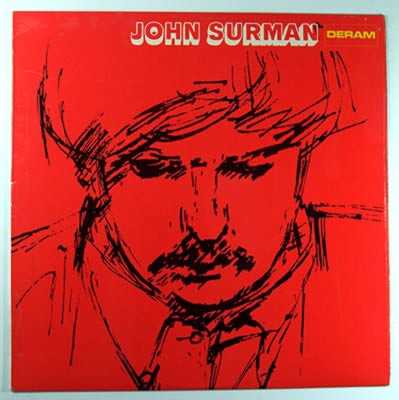 | Album: 1 of 36 Title: John Surman Released: 1968 Tracks: 7 Duration: 45:24 Scroll: Up Down Top Bottom 25% 50% 75% Allmusic AlbumCover | 1 Obeah Wedding (06:30) 2 My Pussin (05:54) 3 Good Times Will Come Again (06:11) 4 Carnival (05:47) 5 Incantation (05:45) 6 Episode (05:08) 7 Dance (10:09) |
| John Surman : Allmusic album Review : Avant-reedist John Surmans self-titled Deram debut straddles the past and future of British jazz. Recorded in collaboration with altoist Mike Osborne, bassist Harry Miller and pianist Russell Henderson, the discs first half comprises four succinct workouts that channel the Caribbean textures and rhythms so influential on the evolution of Britains postwar musical culture -- Surmans potent baritone is kept in check here, and while the performances pulsate with warmth and energy, their straight-ahead approach proves much too limiting. Which makes the second half of John Surman that much more radical -- a sidelong, three-part suite recorded with jazz-rock titans including trumpeter Harry Beckett, bassist Dave Holland and trombonist Paul Rutherford, the music erupts with invention and passion, exploring the deepest reaches of sound but never lapsing into self-indulgence. | ||
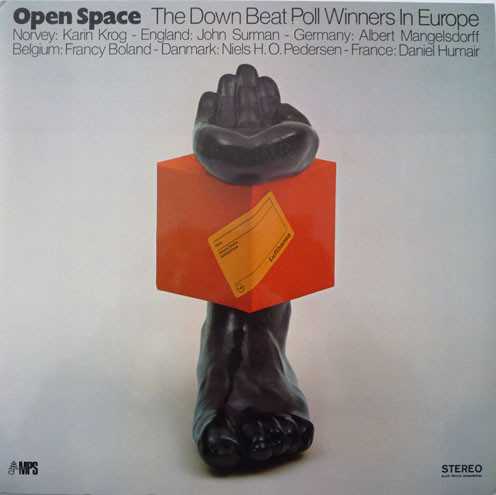 | Album: 2 of 36 Title: Open Space (The Down Beat Poll Winners in Europe) Released: 1969 Tracks: 8 Duration: 44:16 Scroll: Up Down Top Bottom 25% 50% 75% AlbumCover | 1 Maiden Voyage (05:29) 2 Triple Play (03:40) 3 Heres That Rainy Day (02:31) 4 Winter Song (06:50) 5 Nature Boy (03:22) 6 Hello Thursday (10:01) 7 Open Space (06:20) 8 Ryoan-Ji (06:03) |
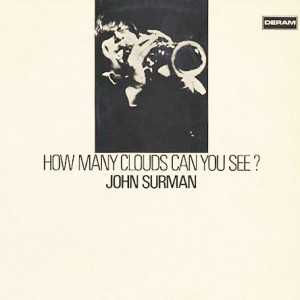 | Album: 3 of 36 Title: How Many Clouds Can You See? Released: 1970 Tracks: 7 Duration: 27:05 Scroll: Up Down Top Bottom 25% 50% 75% Allmusic AlbumCover | 1 Galata Bridge (14:56) 2 Caractacus (04:19) 3 Premonition (04:24) 4 Gathering (?) 5 Ritual (?) 6 Circle Dance (?) 7 How Many Clouds Can You See? (03:26) |
| How Many Clouds Can You See? : Allmusic album Review : John Surmans second album remains his most impressive, anticipating the sound and scope of the European free jazz movement that would blossom in the decade to come -- boasting an extraordinary roster highlighted by trumpeter Harry Beckett, tenorist Alan Skidmore and bassist Barre Phillips, How Many Clouds Can You See? captures a singular moment in the evolution of British jazz, forging a new and distinct sound with few musical antecedents. Surman is a force of nature here, wielding his baritone, soprano and bass clarinet as if they were weapons -- no less impressive is his control, however, and no matter how far How Many Clouds Can You See? may travel, the music never lapses into self-indulgence or swallows its own tail. | ||
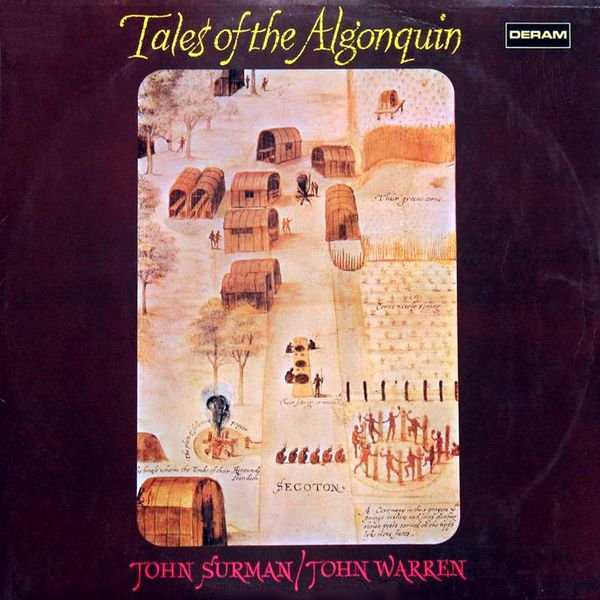 | Album: 4 of 36 Title: Tales Of The Algonquin Released: 1971 Tracks: 5 Duration: 50:13 Scroll: Up Down Top Bottom 25% 50% 75% Allmusic AlbumCover | 1 With Terrys Help (06:30) 2 The Dandelion (06:21) 3 Well Make It (11:57) 4 Picture Tree (02:10) 5 Tales Of The Algonquin: I. The Purple Swan / II. Shingebis And The North Wind / III. The Adventures Of Manabush / IV. The White Water Lily / V. Wihio The Wanderer (23:15) |
 | Album: 5 of 36 Title: Where Fortune Smiles Released: 1971 Tracks: 5 Duration: 35:24 Scroll: Up Down Top Bottom 25% 50% 75% Allmusic Wikipedia AlbumCover | 1 Glancing Backwards (09:03) 2 Earth Bound Hearts (04:21) 3 Where Fortune Smiles (04:03) 4 New Place, Old Place (10:37) 5 Hope (07:18) |
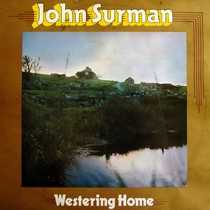 | Album: 6 of 36 Title: Westering Home Released: 1972 Tracks: 9 Duration: 46:38 Scroll: Up Down Top Bottom 25% 50% 75% Spotify Allmusic AlbumCover | 1 Mock Orange (04:30) 2 Whirligig (03:41) 3 JYNJYG (05:38) 4 The Druid (06:43) 5 Outside The Scorpion (03:34) 6 Walrus (03:58) 7 Hornpipe (05:49) 8 Watershed (06:01) 9 Rill-a-Ree (06:41) |
| Westering Home : Allmusic album Review : Westering Home captures British reedist John Surman at his most melodic and soulful, channeling the audacity of previous outings to create music thats still daring but with a new emphasis on structure, texture and tone. The album is vividly experimental yet deeply intimate -- while previous LPs like How Many Clouds Can You See? seemed fascinated with the reaches of sound, here Surman turns inward to explore the heart and mind. At the same time, his playing boasts its signature physical prowess, but with a new economy of scale -- his solos are honed to a razors edge, and not a single note is superfluous. | ||
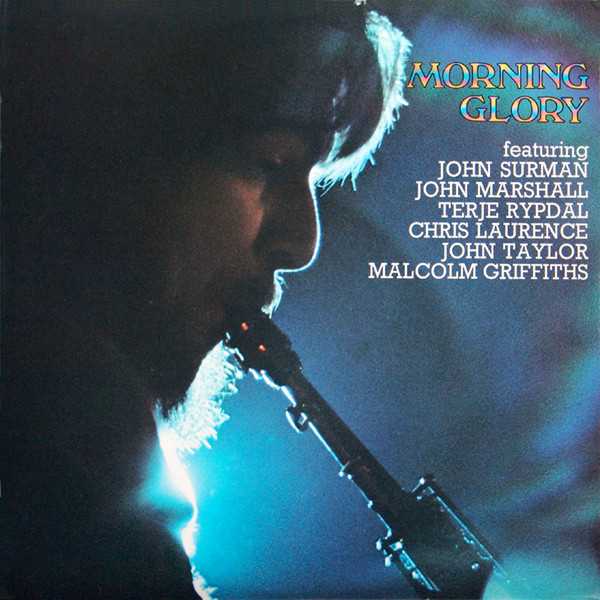 | Album: 7 of 36 Title: Morning Glory Released: 1973 Tracks: 4 Duration: 43:22 Scroll: Up Down Top Bottom 25% 50% 75% Spotify Allmusic AlbumCover | 1 Cloudless Sky (08:15) 2 Iron Man (13:02) 3 Norwegian Steel — Septimus (09:32) 4 Hinc Illae Lacrimae — For us all (Hence These Tears) (12:33) |
| Morning Glory : Allmusic album Review : For Morning Glory, John Surman sets aside his signature baritone saxophone in favor of soprano sax, bass clarinet, and synthesizer -- the result is a record as radiant and beautiful as its title portends, comprised of four epic tracks that despite their scope represent his most mainstream work to date. The skill and dexterity of the improvisations here are astounding. Surman and sidemen Terje Rypdal (guitar), Chris Laurence (bass), John Taylor (electric piano), Malcolm Griffiths (trombone), and John Marshall (drums) connect on an almost telepathic level. But for all its experimental approaches and ingenious ad-libbing, Morning Glory is a remarkably generous album, inviting and approachable like few avant-jazz dates before it. So much of Surmans brilliance hinges on his refusal to alienate listeners regardless of their personal leanings and expectations, while at the same remaining true to his singular muse. | ||
 | Album: 8 of 36 Title: Upon Reflection Released: 1979 Tracks: 8 Duration: 45:03 Scroll: Up Down Top Bottom 25% 50% 75% Spotify Allmusic Wikipedia AlbumCover | 1 Edges of Illusion (10:09) 2 Filigree (03:40) 3 Caithness to Kerry (03:50) 4 Beyond a Shadow (06:14) 5 Prelude and Rustic Dance (05:13) 6 The Lamplighter (06:17) 7 Following Behind (01:18) 8 Constellation (08:22) |
| Upon Reflection : Allmusic album Review : John Surmans debut as a leader for ECM is an atmospheric solo set that utilizes overdubbing (although leaving space for unaccompanied solo sections). Surman performs eight of his moody and often-introspective originals, playing soprano, baritone, bass clarinet and synthesizers. Fortunately there is enough variety in this generally quiet music to hold ones interest. | ||
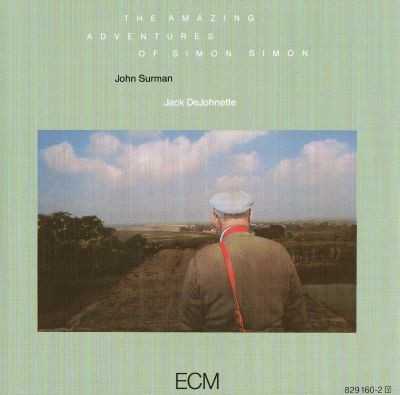 | Album: 9 of 36 Title: The Amazing Adventures Of Simon Simon Released: 1981 Tracks: 9 Duration: 45:11 Scroll: Up Down Top Bottom 25% 50% 75% Spotify Allmusic AlbumCover | 1 Part I - Nestors Saga (The Tale Of The Ancient) (10:50) 2 Part II - The Buccaners (04:03) 3 Part III - Kentish Hunting (Lady Margarets Air) (03:01) 4 Part IV - The Pilgrims Way (To the Seventeen Walls) (05:49) 5 Part V - Within The Halls Of Neptune (04:00) 6 Part VI - Phoenix And The Fire (06:18) 7 Part VII - Fide Et Amore (By Faith And Love) (04:51) 8 Part VIII - Merry Pranks (The Jesters Song) (02:57) 9 Part IX - A Fitting Epitaph (03:22) |
| The Amazing Adventures Of Simon Simon : Allmusic album Review : John Surman (on baritone, soprano, bass clarinet and synthesizer) meets up with drummer Jack DeJohnette (who also plays congas and electric piano) for this typically introspective and spacy ECM set. Surmans playing (especially on baritone and bass clarinet) during nine group originals is worth hearing, but this is not one of his more essential outings. | ||
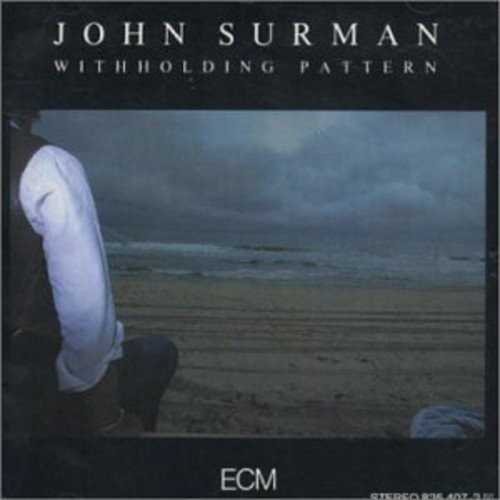 | Album: 10 of 36 Title: Withholding Pattern Released: 1985 Tracks: 8 Duration: 42:05 Scroll: Up Down Top Bottom 25% 50% 75% Spotify Allmusic Wikipedia AlbumCover | 1 Doxology (06:02) 2 Changes of Season (09:27) 3 All Cats Whiskers and Bees Knees (02:54) 4 Holding Pattern I (04:54) 5 Skating on Thin Ice (04:48) 6 The Snooper (01:55) 7 Wildcat Blues (03:48) 8 Holding Pattern II (08:17) |
| Withholding Pattern : Allmusic album Review : A saxophone workout from 85 by outstanding British player John Surman. While solo sax can be extremely tiring, Surman mixes enough elements of rock, free, blues, and hard bop to keep the songs varied. His aggressive style, especially on baritone, keeps the energy level high. | ||
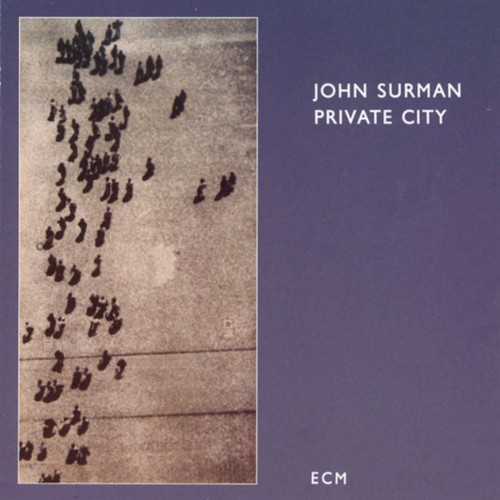 | Album: 11 of 36 Title: Private City Released: 1988 Tracks: 8 Duration: 43:42 Scroll: Up Down Top Bottom 25% 50% 75% Spotify Allmusic Wikipedia AlbumCover | 1 Portrait Of A Romantic (07:03) 2 On Hubbard’s Hill (04:33) 3 Not Love Perhaps (05:20) 4 Levitation (04:06) 5 Undernote (02:44) 6 The Wanderer (05:46) 7 Roundelay (05:15) 8 The Wizard’s Song (08:51) |
| Private City : Allmusic album Review : English multi-instrumentalist John Surman has been known on a worldwide level, but never recognized as he deserved to be in the United States. A collaboration with John McLaughlin, or fellow Brits on the fusion or free jazz scene increased his cache a bit, but being a part of the ECM label had to have increased his visibility to a larger degree. This quite different recording of overdubbed woodwind and electronics has a suitable palate and soundscape profile for the European label, enhanced by the immaculate production values of the Rainbow Studio in Oslo, Norway, and fortified by Surmans heady and spacy revelations on this project of deep, introspective, and divine music. At his most heartfelt from the outset, a haunting refrain with flutes and recorder above synthesizers underpins a lilting bass clarinet melody on "Portrait of a Romantic," while the reverse sentiment of emptiness in a Terry Riley or Cluster like minimalism identifies "Not Love Perhaps" under Surmans soprano sax. "Roundelay" is stunning and unique to this set, with bass clarinet as an ostinato bass, buoying a full array of overdubbed saxophones sounding like an interactive quartet in a laid-back frame of sheer beauty. In full mezzo piano sonic control, a more religious and spiritual approach with multi-layered saxes and synths under the surface releases Surmans soprano again on "The Wanderer." Irish or Scottish ethnicity comes across clearly "On Hubbards Hill" in 3/4 time, Surmans full-throated bass clarinet is overdubbed for "Levitation," and looped 2/4 repeat beats unleashes a churning, yet mystical and wondrous baritone sax line on a wow inducing "The Wizards Song." There is one single tracked solo piece, as Surmans airy soprano with slight echo informs the perfectly titled "Undernote." This album, a fully realized project, has Surman exploiting all of the timbres and tones available to him in a manner he could not accomplish with other musicians in real time. Its a full exploration of his soul, from land, sea, and outer atmospheric galaxies, on wings of supersonic fancy and fantasy. | ||
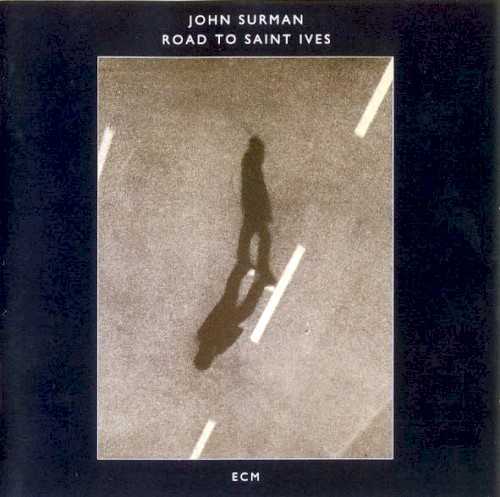 | Album: 12 of 36 Title: Road to Saint Ives Released: 1990 Tracks: 12 Duration: 53:35 Scroll: Up Down Top Bottom 25% 50% 75% Spotify Allmusic Wikipedia AlbumCover | 1 Polperro (02:07) 2 Tintagel (12:12) 3 Trethevy Quoit (00:55) 4 Rame Head (04:42) 5 Mevagissey (06:53) 6 Lostwithiel (01:28) 7 Perranporth (02:01) 8 Bodmin Moor (06:41) 9 Kelly Bray (01:23) 10 Piperspool (05:10) 11 Marazion (02:36) 12 Bedruthan Steps (07:27) |
| Road to Saint Ives : Allmusic album Review : During a period of his career that would feature some notable collaborations with luminaries such as Paul Bley, Bill Frisell, Elvin Jones, and Barre Phillips, John Surman also produced Road to Saint Ives, a gentle, introspective, yet adventurous solo work. The entire album is a one-man effort, from the composition to all of the instrumentation, with Surman building strata of sound over keyboard and percussion structures using bass clarinet and the soprano and bass saxophones he is known for. The resulting work communicates a unique vision and mood, unsullied by the conflicting interpretations of other performers. The album centers around a portrait of the landscape and spirit of Cornwall, taking more than a few bits of inspiration from British folk music, but remaining firmly perched in the jazz tradition. The individual pieces, while they have place names, are not intended to evoke specific geographic locations -- rather they act as facets of the whole experience. Surmans work on the soprano sax is the most impressive of all of his instrumentation on the recording -- most noticable because it has the brightest sound, but also because he takes the instrument further texturally than most, allowing it to quiver, sing, squeak, and slide. The result is ethereal without being saccharine, adventurous while still highly listenable. Some of the most interesting tracks include the brief but pretty "Kelly Bray," the complex echoing birdsongs of "Perranporth," and the electronic ambience of "Piperspool." | ||
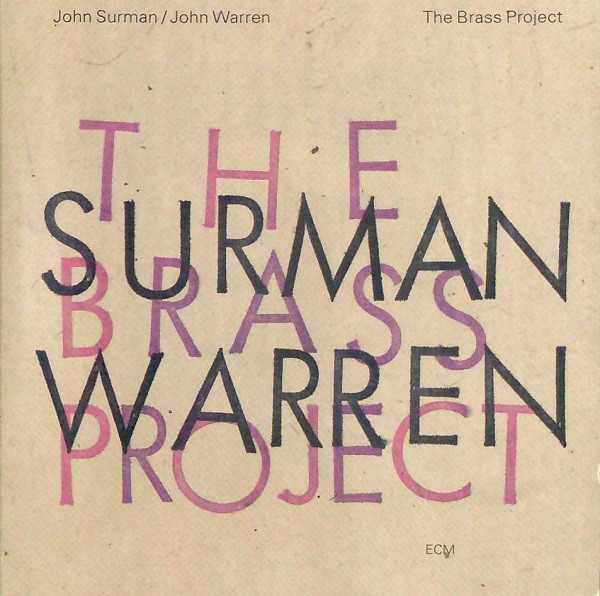 | Album: 13 of 36 Title: The Brass Project Released: 1993 Tracks: 9 Duration: 1:01:59 Scroll: Up Down Top Bottom 25% 50% 75% Spotify Allmusic AlbumCover | 1 The Returning Exile (07:46) 2 Coastline (03:38) 3 The New One Two, Part 1 (06:38) 4 The New One Two, Part 2 (07:33) 5 Spacial Motive (04:56) 6 Wider Vision (08:33) 7 Silent Lake (06:01) 8 Mellstock Quire (11:19) 9 All for a Shadow (05:35) |
| The Brass Project : Allmusic album Review : For this ECM project, John Surman (who plays soprano, baritone, clarinet, bass clarinet and piano) and conductor John Warren wrote a full set of original music for Surmans reeds, a seven-piece brass section and a rhythm section to interpret. This episodic set has its share of sound explorations but also contains swinging sections and an impressive amount of excitement. The colorful solos (mostly by Surman) and the unpredictable writing make this a highly recommended disc. | ||
 | Album: 14 of 36 Title: In the Evenings Out There Released: 1993 Tracks: 12 Duration: 55:41 Scroll: Up Down Top Bottom 25% 50% 75% AlbumCover | 1 Afterthoughts (04:04) 2 Portrait of a Silence (05:55) 3 Soft Touch (03:38) 4 Speak Easy (02:44) 5 Interface (05:19) 6 Alignment (03:47) 7 Fair Share (06:01) 8 Article Four (08:26) 9 Married Alive (04:14) 10 Spe-Cu-Lay-Ting (01:24) 11 Tomorrow Today (02:15) 12 Note Police (07:54) |
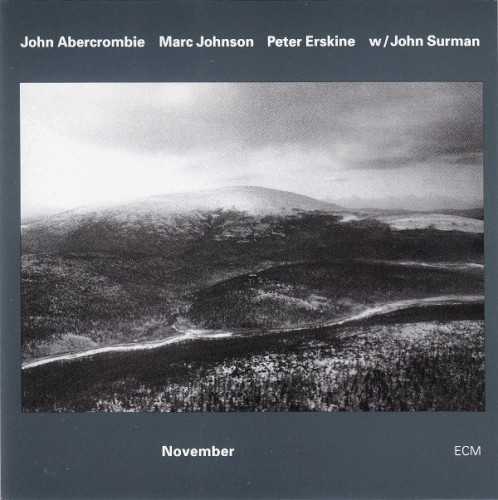 | Album: 15 of 36 Title: November Released: 1993-10 Tracks: 12 Duration: 1:09:12 Scroll: Up Down Top Bottom 25% 50% 75% Allmusic Wikipedia AlbumCover | 1 The Cats Back (06:04) 2 J.S. (06:26) 3 Right Brain Patrol (09:00) 4 Prelude (03:27) 5 November (08:26) 6 Rise and Fall (05:21) 7 Johns Waltz (05:40) 8 Ogeda (04:40) 9 Tuesday Afternoon (02:55) 10 To Be (05:23) 11 Come Rain or Come Shine (06:04) 12 Big Music (05:40) |
| November : Allmusic album Review : This 1993 recording of John Abercrombies trio with a guest appearance by British saxophone giant and composer John Surman is, without question, a trademark ECM session. Theres the spacious, pristine, icy production by label boss Manfred Eicher from his studio in Oslo. Next, all the players are ECM staples with the exception of Erskine, who plays everything from pop jazz to classical music. But there are many things that distinguish it as well. For one, Surman is playing here with a fire not heard since the early 70s. Whether he is blowing a baritone or soprano saxophone or his bass clarinet, hes cutting loose. There are long, looping lines that quote everyone from John Carter to Jim Pepper to Eric Dolphy and Ben Webster. His willingness to seek out the heart of dissonance inspires his bandmates, particularly on "The Cats Back." From a nuanced, eerie wail to a Native American folk melody to smoky phraseology taken from "Chelsea Bridge," Surman pulls out all the stops and then puts them back in to make the tune whisper. Abercrombie doesnt exactly take a back seat on this date, but he does showcase his expansive knowledge of Tal Farlows harmonic palette by playing extended chords either inside the melody or as a dissonant counterpoint to Surman. Other standouts include the title track with its strange, even alien, crosstalk between Johnsons bowed bass and Abercormbies short, knotted leads. On Surmans ballad "Ogeda," too, Abercrombie investigates the manner in which the jazz tradition celebrates dissonant harmonies while using a kind of lyrical improvisation to keep the tune gently swinging. Its a solid session from beginning to end, but one still wishes Eicher would take his hands off the sound controls a bit, allowing some of the rawness that each of these players shows in live settings to enter the studio. | ||
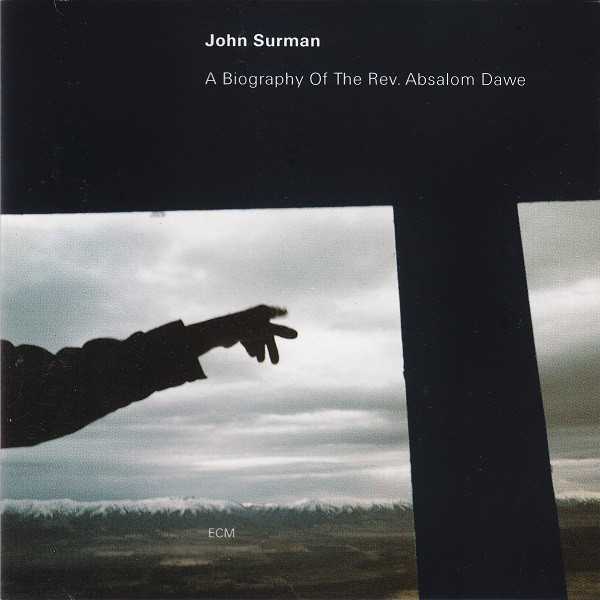 | Album: 16 of 36 Title: A Biography of the Rev. Absalom Dawe Released: 1995 Tracks: 10 Duration: 49:44 Scroll: Up Down Top Bottom 25% 50% 75% Spotify Allmusic Wikipedia AlbumCover | 1 First Light (02:45) 2 Countless Journeys (07:34) 3 A Monastic Calling (05:55) 4 Druids Circle (02:46) 5 Twas but Piety (07:23) 6 Three Aspects (02:53) 7 The Long Narrow Road (02:51) 8 Wayfarer (09:31) 9 The Far Corners (06:37) 10 An Image (01:25) |
| A Biography of the Rev. Absalom Dawe : Allmusic album Review : John Surman is an artist with an amazing range and depth of style, from contemporary classical to jazz to electronic music. In few places is this more evident than on A Biography of the Rev. Absalom Dawe, on which Surman acts as a sort of one-man wind chamber ensemble, playing baritone saxophone (his signature instrument) as well as soprano sax, alto and bass clarinets, and keyboards. The electronic elements are few and unobtrusive, and the keyboards bright tones are a good match for the fluid, breathy sounds of the wind instruments. The music itself is nearly always ethereal and atmospheric, without journeying into the territory of askeletal new age softness. Instead, the execution seems precise and intentional; each instrument was recorded separately and then mixed as individual units into the whole, giving Surman additional opportunities for crispness of sound. The spare waves of music occasionally part to give way to energetic solos, like on "Twas but Piety" where ribbons of clarinet and funereal organ-esque sounds are bookends for passionate saxophone sections. Elements of modern composition, jazz, and European folk can be heard throughout and the mood is one of reflection and wintry quiet. Overall, this is one of Surmans most daring and yet most successful projects to date. | ||
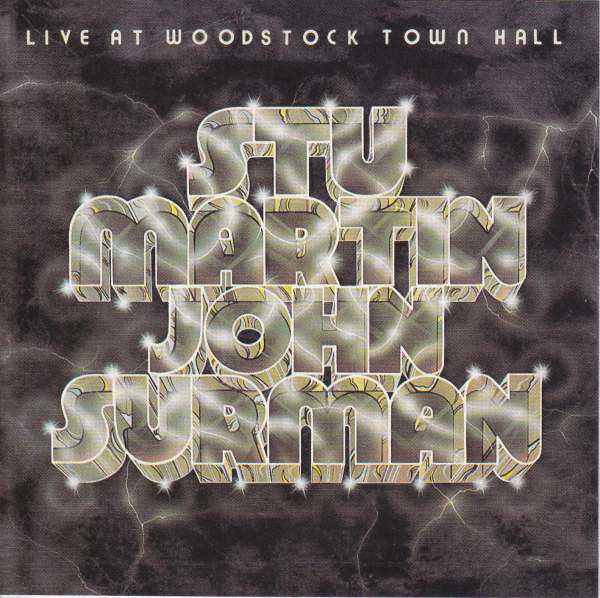 | Album: 17 of 36 Title: Live At Woodstock Town Hall Released: 1995 Tracks: 6 Duration: 36:15 Scroll: Up Down Top Bottom 25% 50% 75% AlbumCover | 1 Harry Lovett-Man Without A Country (04:48) 2 Are You Positive Youre Negative? (07:19) 3 Wrested In Mustard (04:31) 4 Professor Goodlys Implosion Machine (07:08) 5 Master Of Disaster (07:28) 6 Dont Leave Me Like This (05:01) |
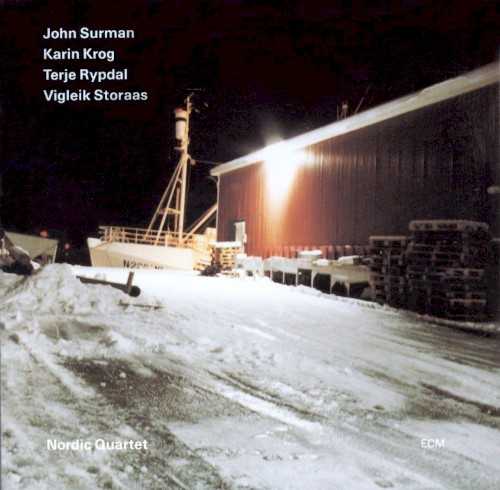 | Album: 18 of 36 Title: Nordic Quartet Released: 1995-03 Tracks: 9 Duration: 50:23 Scroll: Up Down Top Bottom 25% 50% 75% Spotify Allmusic AlbumCover | 1 Traces (07:14) 2 Unwritten Letter (03:49) 3 Offshore Piper (02:09) 4 Gone to the Dogs (03:58) 5 Double Tripper (06:18) 6 Ved Svørevatn (08:06) 7 Watching Shadows (05:20) 8 The Illusion (05:57) 9 Wild Bird (07:29) |
| Nordic Quartet : Allmusic album Review : This ECM CD is only a mixed success. John Surman is the lead voice most of the way and his playing (particularly on baritone and bass clarinet) is typically atmospheric and emotional. However, singer Karin Krog (who is on around half of the songs) only makes an impression on the closing "Wild Bird"; otherwise her long tones sound out of place. Pianist Vigleik Storaas is mostly used in an accompanying role while guitarist Terje Rypdals feedback-dominated tone is primarily utilized for color. The group never really meshes their disparate voices together and few of the spacey (and sometimes meandering) group originals other than "Wild Bird" are at all memorable. All of the principals have sounded better elsewhere. | ||
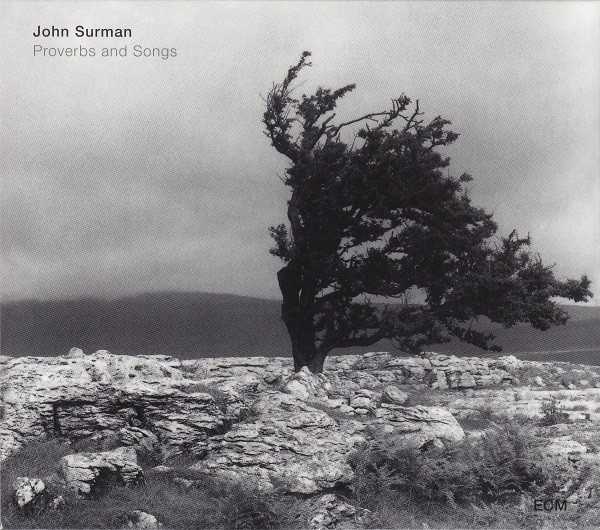 | Album: 19 of 36 Title: Proverbs And Songs Released: 1997 Tracks: 9 Duration: 49:32 Scroll: Up Down Top Bottom 25% 50% 75% Spotify Allmusic Wikipedia AlbumCover | 1 Prelude (03:11) 2 The Sons (04:55) 3 The Kings (06:41) 4 Wisdom (07:39) 5 Job (04:50) 6 No Twilight (07:42) 7 Pride (05:00) 8 The Proverbs (04:06) 9 Abraham Arise! (05:24) |
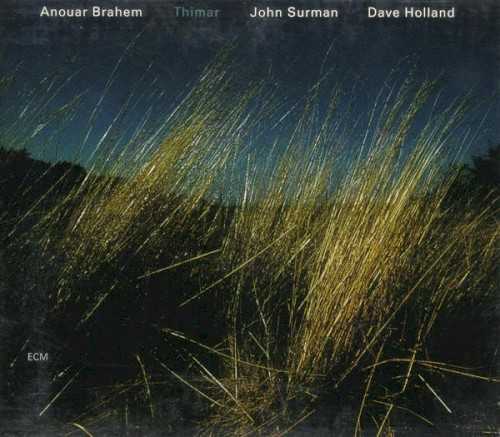 | Album: 20 of 36 Title: Thimar Released: 1998-11-10 Tracks: 11 Duration: 54:35 Scroll: Up Down Top Bottom 25% 50% 75% Spotify Allmusic AlbumCover | 1 Badhra (08:30) 2 Kashf (05:23) 3 Houdouth (05:36) 4 Talwin (04:18) 5 Waqt (02:32) 6 Uns (04:48) 7 Al Hizam Al Dhahbi (05:40) 8 Qurb (05:16) 9 Mazad (05:05) 10 Kernow (05:10) 11 Hulmu Rabia (02:14) |
| Thimar : Allmusic album Review : Thimar is a most impressive collaboration between Brahem, soprano saxophonist/bass clarinetist John Surman and double bassist Dave Holland which superbly fuses the traditions of jazz with those of Arab classical music, pushing the parameters of both while succumbing to the clichés of neither. | ||
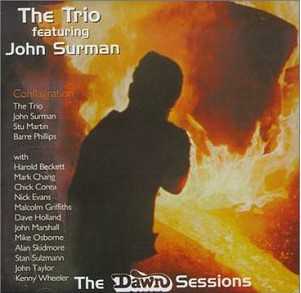 | Album: 21 of 36 Title: The Dawn Sessions Released: 1999 Tracks: 11 Duration: 1:11:52 Scroll: Up Down Top Bottom 25% 50% 75% Allmusic AlbumCover | 1 Glancing Backwards (09:03) 2 Earth Bound Hearts (04:21) 3 Where Fortune Smiles (04:03) 4 New Place, Old Place (10:34) 5 Hope (07:18) 1 Harry Lovett - Man Without a Country (04:45) 2 Are You Positive Youre Negative? (07:22) 3 Wrested in Mustard (04:36) 4 Professor Goodlys Implosion Machine (07:10) 5 Master of Disaster (07:30) 6 Dont Leave Me Like This (05:07) |
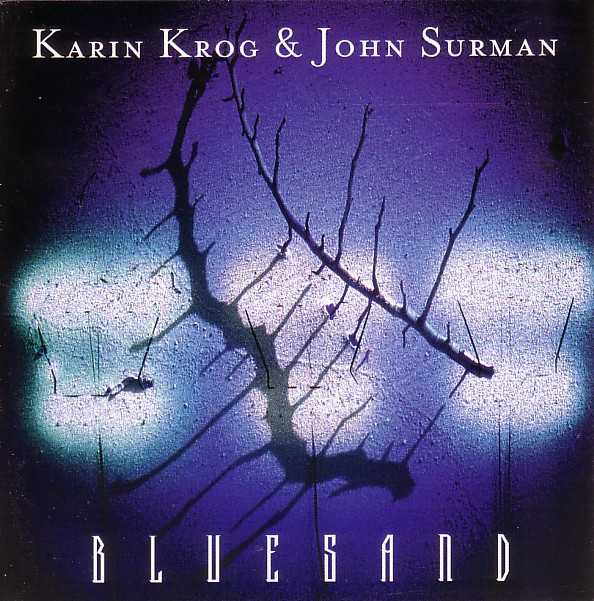 | Album: 22 of 36 Title: Bluesand Released: 1999 Tracks: 12 Duration: 54:35 Scroll: Up Down Top Bottom 25% 50% 75% Spotify Allmusic AlbumCover | 1 The Nightingale (04:41) 2 Ribbon Of Sand (03:19) 3 Sombre Woods (04:49) 4 Voice Shadow (04:31) 5 It Could Be Hip (04:23) 6 Dont Just Sing (07:00) 7 SAS Blues (02:46) 8 So Blue (02:41) 9 Bluesand (06:27) 10 Hidden Dreams (01:49) 11 Secret Games (05:31) 12 Fly Away (06:38) |
 | Album: 23 of 36 Title: Adventure Playground Released: 2001-06-19 Tracks: 9 Duration: 1:05:39 Scroll: Up Down Top Bottom 25% 50% 75% Spotify Allmusic Wikipedia AlbumCover | 1 Only Yesterday (08:43) 2 Figfoot (04:37) 3 Quadraphonic Question (14:20) 4 Twice Said Once (06:58) 5 Just For Now (03:52) 6 As If We Knew (07:33) 7 Twisted Roots (10:22) 8 Duet for One (03:32) 9 Seven (05:42) |
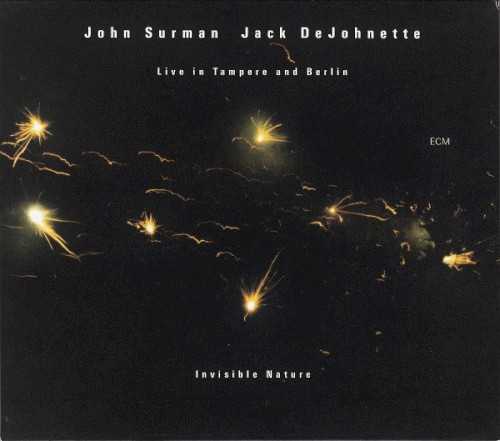 | Album: 24 of 36 Title: Invisible Nature Released: 2002 Tracks: 7 Duration: 1:15:12 Scroll: Up Down Top Bottom 25% 50% 75% Spotify Allmusic AlbumCover | 1 Mysterium (15:57) 2 Rising Tide (09:32) 3 Outback Spirits (12:30) 4 Underground Movement (09:45) 5 Ganges Groove (06:36) 6 Fair Trade (11:21) 7 Song for World Forgiveness (09:29) |
| Invisible Nature : Allmusic album Review : John Surman (on baritone and soprano saxophones, bass clarinet, and synthesizers) and Jack DeJohnette (playing drums, electronic percussion, and piano) make for a very intriguing duo on these seven originals taken from a pair of live concerts. Other than "Song for World Forgiveness" (a ballad mostly by DeJohnette), the music is primarily freely improvised yet manages to be melodic, diverse, and logical. The performances are atmospheric, with both players utilizing electronics in spots while retaining their own musical personalities. Surman has long been a very flexible and mostly laid-back player, while DeJohnette also has the ability to fit in almost anywhere. Rather than individual melodies or solos, this CD is most notable for its overall feel and the blend between these two unique musicians. | ||
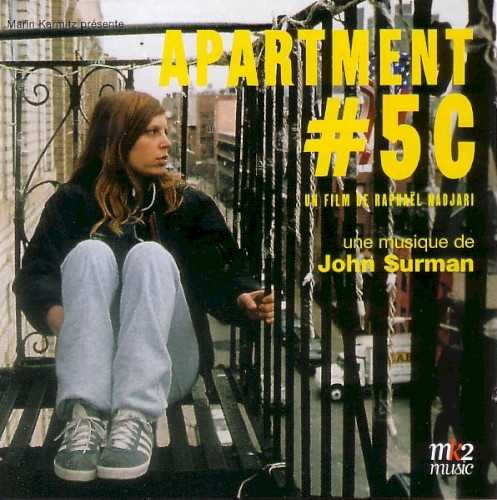 | Album: 25 of 36 Title: Apartment #5C Released: 2002 Tracks: 13 Duration: 49:04 Scroll: Up Down Top Bottom 25% 50% 75% Spotify AlbumCover | 1 Beginning Credits / Running Away (04:00) 2 Taxi to Brooklyn / Nicky Shoots Herself (02:38) 3 Saving Nicky (02:05) 4 Harold Working, Nicky Recovering / Nicky on the Stairs (02:32) 5 Nicky Helps Harold (00:41) 6 Finding Works A&B (01:53) 7 Loneliness / The Crime (01:55) 8 She Leaves the Swimming Pool / Nicky Knocks the Door (02:27) 9 Closing Credits (05:38) 10 Suite From Apartment 5c, Part 1 (06:49) 11 Suite From Apartment 5c, Part 2 (06:09) 12 Suite From Apartment 5c, Part 3 (05:39) 13 Music From the Club / Total Fragment (06:38) |
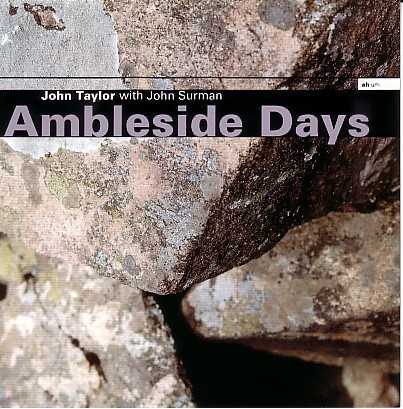 | Album: 26 of 36 Title: Ambleside Days Released: 2003 Tracks: 8 Duration: 45:24 Scroll: Up Down Top Bottom 25% 50% 75% Allmusic AlbumCover | 1 Lodore Falls (05:32) 2 Wandering (05:00) 3 Ambleside Days (10:48) 4 Scale Force (04:18) 5 Coniston Fells (05:44) 6 Pathway (02:26) 7 Clapperclowe (05:00) 8 Dry Stone (06:36) |
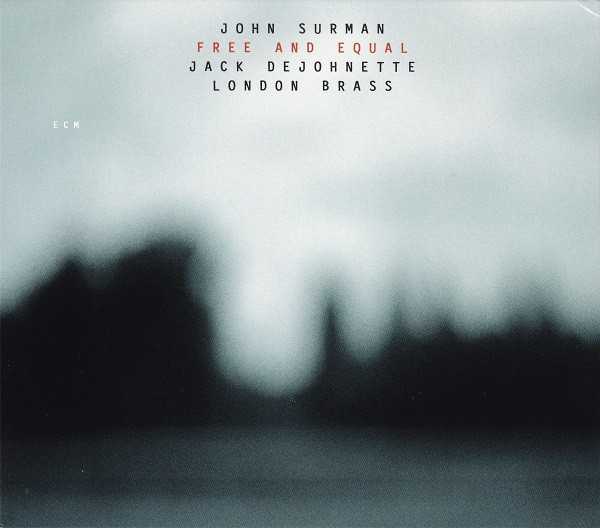 | Album: 27 of 36 Title: Free and Equal Released: 2003 Tracks: 9 Duration: 1:07:02 Scroll: Up Down Top Bottom 25% 50% 75% Spotify Wikipedia AlbumCover | 1 Preamble (04:11) 2 Groundwork (09:33) 3 Sea Change (10:14) 4 Back and Forth (11:51) 5 Fire (06:47) 6 Debased Line (05:02) 7 In the Shadow (06:56) 8 Free and Equal (08:47) 9 Epilogue (03:41) |
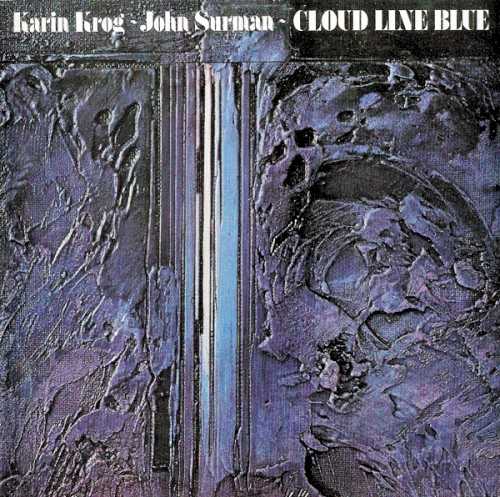 | Album: 28 of 36 Title: Cloud Line Blue Released: 2004 Tracks: 7 Duration: 41:03 Scroll: Up Down Top Bottom 25% 50% 75% Spotify AlbumCover | 1 Alone Song (04:23) 2 New Spring (06:53) 3 Eyeless in Movement (06:26) 4 Jonathan (07:25) 5 Empty Streets (04:12) 6 Cloud Line Blue (08:51) 7 Edge Piece (02:53) |
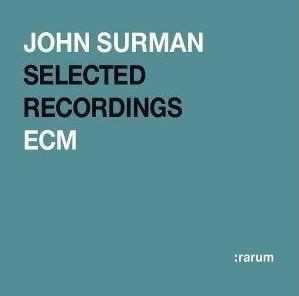 | Album: 29 of 36 Title: Selected Recordings Released: 2004-02-02 Tracks: 13 Duration: 1:11:04 Scroll: Up Down Top Bottom 25% 50% 75% Spotify AlbumCover | 1 Druid’s Circle (02:52) 2 Number Six (05:53) 3 Portrait of a Romantic (07:01) 4 Ogeda (04:39) 5 The Returning Exile (07:41) 6 Edges of Illusion (10:13) 7 The Buccaneers (03:59) 8 The Snooper (01:59) 9 Mountainscape VIII (07:15) 10 Figfoot (04:33) 11 Piperspool (05:10) 12 Gone to the Dogs (03:59) 13 Stone Flower (05:46) |
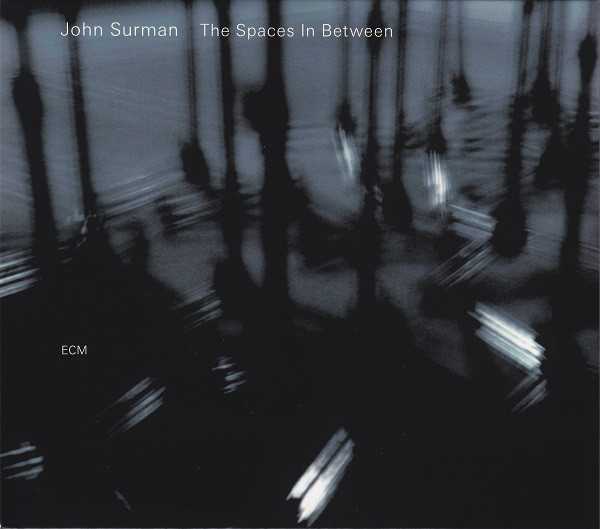 | Album: 30 of 36 Title: The Spaces in Between Released: 2007-05-07 Tracks: 11 Duration: 1:01:41 Scroll: Up Down Top Bottom 25% 50% 75% Spotify Allmusic Wikipedia AlbumCover | 1 Moonlighter (06:25) 2 You Never Know (05:31) 3 Wayfarers All (06:02) 4 Now and Again (07:31) 5 Winter Wish (04:35) 6 The Spaces in Between (08:18) 7 Now See! (03:12) 8 Mimosa (04:42) 9 Hubbub (03:57) 10 Where Fortune Smiles (04:40) 11 Leaving the Harrow (06:48) |
| The Spaces in Between : Allmusic album Review : Its been four long years since British composer and saxophonist John Surman issued a new recording for his longtime home label, ECM. In a loose way, The Spaces in Between is the mirror image of 2003s Free and Equal, recorded with drummer Jack DeJohnette and the London Brass (though that record was a mirror of the first teaming of Surman with his longtime collaborator, double bassist Chris Laurence and the then-new Trans4mation String Quartet). Surman has been writing, arranging for, and performing with Trans4mation since that time. Whereas Coruscating was far more formal in structure, and its textures and colorings plotted in advance, here there are more opportunities for the strings to improvise and add more freely to the mix. There is a beauty in this, as Surman revisits and reconstructs pieces that go all the way back to his Dawn years with the opening track "Moonlighter." Dont expect to be able to recognize this one from its former incarnation. The earlier band, in which John McLaughlin and Dave Holland played roles, was a much more fiery ensemble -- at a much louder volume -- for whom improvisation was the true prize. Here, the true treasure of the relatively spare melody Surman composed is worked from the ground up with restrained elegance by Transmation, and Laurences role is one of being a contrapuntal ballast for the saxophonist who plays baritone in a decidedly non post-Coltrane manner. Other previously recorded Surman tunes are the lovely "Mimosa," written for the Thimar session trio with Anouar Brahem and Holland. The sheer old-world exoticism of the oud is here replaced by the slowly developing theme plucked out on the violin and then played in full by the quartet as Surman underscores those lines with short, melodic modal lines of his own, all of them resolving in passage. His soloing here is also far more engaging, allowing his own phrases to drift into one another with the end of one line suggesting the entrance of the next as Rita Mannings violin hovers and swoops in improvisation in the backdrop. Laurence enters a with a very compelling rhythm line that feels more like a solo setting, leaving Surman completely free to follow a different melodic path. In both pieces its easy to hear them dovetailing, complementing one another so well its almost as if the work was written in two distinct sections meant to be played one after another. The title cut is the hinge piece here, and occurs almost dead center. Its written as a solo violin work for Manning, and, at over eight minutes, is as striking a work as weve heard from Surman written for another instrument. Make no mistake, while there is improvisation involved here, this is a very tautly written work, where dynamic and tone demand as much control as the notes themselves. Surmans sense of space is singular. His lines are literally pregnant with meaning as they suggest not only themselves but reference other elements of both British folk traditions and its long, rich classical past while looking squarely at the 20th century and composers from Robert Simpson to Harold Truscott. What takes place after this gorgeous solo work is a much more active and lush, even bright sense of coloration and gorgeous harmonic structures to complement Surmans solos; his lovely and poetic soprano work on "Where Fortune Smiles" is a prime example, and the sprightly, paradigmatic "Leaving the Harrow," contains some of the most intricate work on the set. Its painterly in its movement, yet, at the same time suggests a look through memorys prism, the strings are so fluid and turn so quickly as Laurence plays a nearly knotty bass solo assisted by the rich, warm tonal clusters from the quartet at its beginning, and is left alone before Surman joins him for some rich and utterly lovely interplay before the strings re-enter in earnest, carrying with them the kind of drama that only the memory can illustrate. Surman may not record quite so regularly as he once did, but given how rich, varied, and thoroughly engaging and sumptuous this work is, we should perhaps celebrate the fact that we can savor his records rather than consume them. | ||
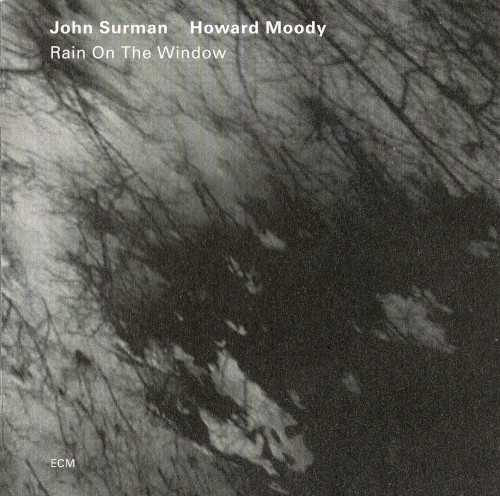 | Album: 31 of 36 Title: Rain on the Window Released: 2008 Tracks: 15 Duration: 49:21 Scroll: Up Down Top Bottom 25% 50% 75% Spotify Allmusic AlbumCover | 1 Circum I (03:58) 2 Stained Glass (03:49) 3 The Old Dutch (03:30) 4 Dancing in the Loft (01:53) 5 Step Lively! (03:06) 6 Stone Ground (04:19) 7 Tierce (02:59) 8 Circum II (02:03) 9 Rain on the Window (04:06) 10 Dark Reeds (02:50) 11 O Waly Waly (02:43) 12 A Spring Wedding (03:07) 13 Im Troubled in Mind (02:47) 14 On the Go (03:59) 15 Pax Vobiscum (04:12) |
| Rain on the Window : Allmusic album Review : In short saxophone and church organ duets, John Surman and Howard Moody follow up their previous orchestral project, Proverbs & Songs from 1998, with this series of improvisations that track through occasional traditional themes, as well as new compositions that have older values and motifs in mind. Surman is his usual brilliant and staunchly individual self, whether playing his trusty baritone sax, bass clarinet, or at times, soprano, while Moodys keyboards provide more of a foundation rather than being on equal footing. Recorded in Oslo, Norway, moods from joyous and active to introspective or pensive are dotted throughout this program that seems like a musical biopic through the life of virtually anyone. The period pieces "O Waly Waly" and "Im Troubled in Mind" are played in the kind of preoccupied quietude you expect from these introspective Europeans. But more sober feelings are but a fading memory when compared to the celebratory bass clarinet of Surman during "Dancing in the Loft," or the playfully energetic "Step Lively!" and "On the Go." Moody is at his best when rendering obsidian or rustic memories from days of yore as on "The Old Dutch," or underneath Surmans baritone sax during the pithy, perfectly titled track "The Dark Reeds." If the listener enjoys a variety of folk forms turned into modern music, Rain on the Window may be appropriate, used here and there for any precipitous, or sunny day. | ||
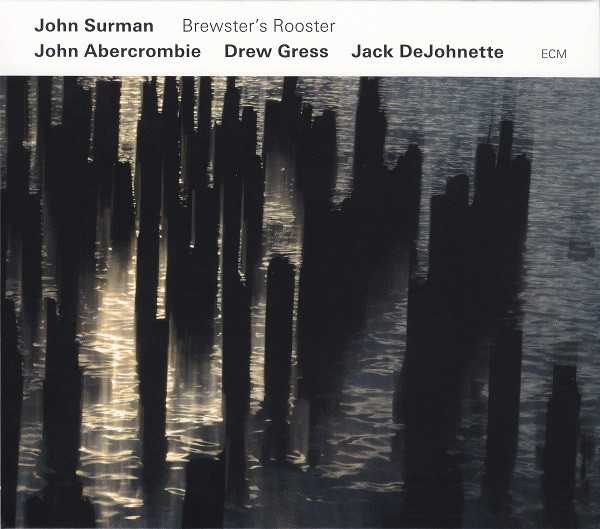 | Album: 32 of 36 Title: Brewsters Rooster Released: 2009-08-03 Tracks: 9 Duration: 1:04:48 Scroll: Up Down Top Bottom 25% 50% 75% Spotify Allmusic Wikipedia AlbumCover | 1 Slanted Sky (06:35) 2 Hilltop Dancer (07:28) 3 No Finesse (06:51) 4 Kickback (07:26) 5 Chelsea Bridge (05:51) 6 Haywain (06:22) 7 Counter Measures (10:45) 8 Brewsters Rooster (06:39) 9 Going for a Burton (06:47) |
| Brewster's Rooster : Allmusic album Review : Saxophonist and composer John Surman has, in his nearly 50-year career, played and recorded in as many settings as one might imagine. Whether its experimental free music, rockist fusion projects, large ensembles, solo, duets, concept recordings, you name it. His ECM tenure has been a fascinating one. That said, no matter how far afield his explorations have taken him, the place he always returns to, is playing jazz -- some might meritoriously argue the point that no matter what he does, jazz lies at its root. Brewsters Rooster is indeed a pretty straight-ahead jazz date. Accompanied by guitarist John Abercrombie, drummer Jack DeJohnette, and bassist Drew Gress. The sound on the recording, while contemporary, does hearken back to the heady days of ECM in the late 70s. Seven of the nine cuts here are Surman originals, the two covers are an utterly gorgeous reading of "Chelsea Bridge," and John Warrens "Slanted Sky," which opens the set. The band can swing when they need (or want) to: check the sets second cut, "Hilltop Dancer," with some beautifully understated work by Abercrombie and double-timed, Latin syncopation by DeJohnette. The lyric line is Spanish-tinged and Surman is in excellent post-bop form, extending the harmonic possibility with a gloriously knotty chorus. "Slanted Sky" is a more atmospheric tune. Its slow, but flows nearly pastorally with Surmans horn moving through the melody and taking the improvisation into subtle territory. "No Finesse" is another swinger and "Kickback," which begins with a taut, labyrinthine lyric line, quickly moves into adventurous harmonic terrain before a duet between Surman and DeJohnette move it to the stratosphere. Its kinetic, head-to-head, and a real "moment" in jazz terms. The reading of Billy Strayhorns "Chelsea Bridge" is particularly lovely here. Surmans baritone saxophone is painted beautifully by Abercrombies subtle chord voicings and the sparse arrangement. But its Surmans lyricism that impresses most. Its tender and tough with that slight edge in his tone. The track loses none of its grace or elegance, but feels less nostalgic in this context. "Haywain" is slightly more out with an excellent and prolonged contrapuntal exchange between Surman and Abercrombie. Brewsters Rooster is another high point in Surmans career. This studio band is as sympathetic as his working road unit, and his willingness to place the tradition in the context of his more contemporary, sometimes ambiguous harmonic explorations reveals the roots, shoots, and branches of his art and discipline. | ||
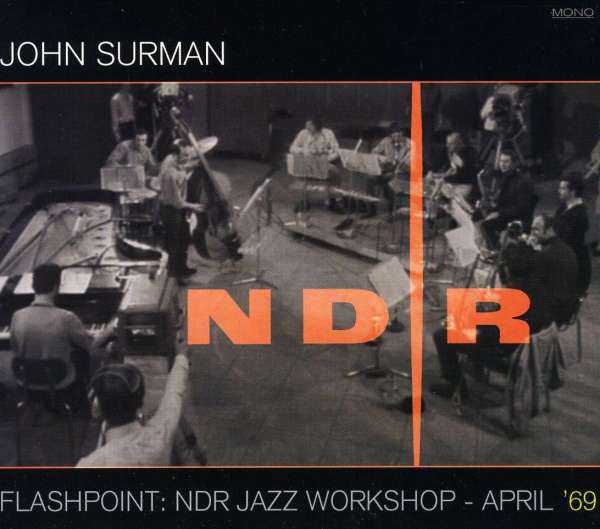 | Album: 33 of 36 Title: Flashpoint: NDR Jazz Workshop - April 69 Released: 2011-02-14 Tracks: 5 Duration: 40:36 Scroll: Up Down Top Bottom 25% 50% 75% Allmusic AlbumCover | 1 Mayflower (08:40) 2 Once Upon a Time (08:40) 3 Puzzle (05:56) 4 Gratuliere (08:47) 5 Flashpoint (08:31) |
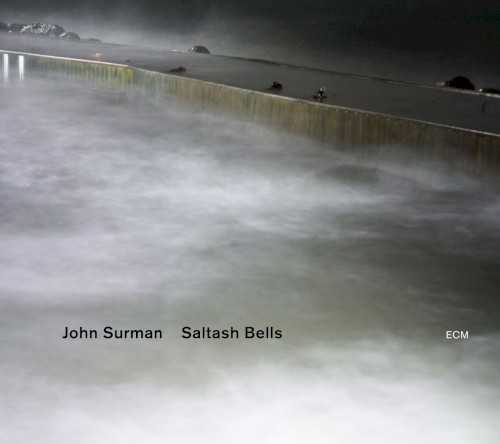 | Album: 34 of 36 Title: Saltash Bells Released: 2012-06-26 Tracks: 10 Duration: 59:12 Scroll: Up Down Top Bottom 25% 50% 75% Spotify Allmusic AlbumCover | 1 Whistmans Wood (06:34) 2 Glass Flower (03:14) 3 On Staddon Heights (07:34) 4 Triadichorum (03:38) 5 Winter Elegy (08:20) 6 Ælfwin (02:18) 7 Saltash Bells (10:42) 8 Dark Reflections (03:30) 9 The Crooked Inn (02:44) 10 Sailing Westwards (10:38) |
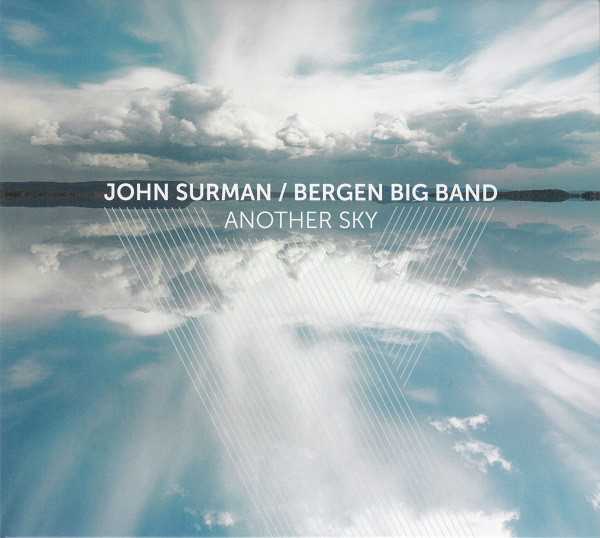 | Album: 35 of 36 Title: Another Sky Released: 2014 Tracks: 7 Duration: 59:47 Scroll: Up Down Top Bottom 25% 50% 75% Spotify Allmusic AlbumCover | 1 Another Sky (09:04) 2 South-Western Approaches (10:35) 3 Spending My Time (08:22) 4 Carpet Ride (08:33) 5 Green Wood (08:18) 6 Ruby My Dear (07:35) 7 Scare em Up (07:16) |
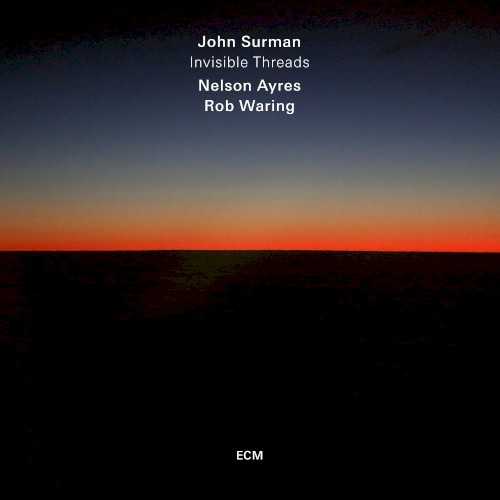 | Album: 36 of 36 Title: Invisible Threads Released: 2018-01-19 Tracks: 12 Duration: 58:47 Scroll: Up Down Top Bottom 25% 50% 75% Spotify Allmusic AlbumCover | 1 At First Sight (02:32) 2 Autumn Nocturne (06:50) 3 Within the Clouds (04:47) 4 Byndweed (05:09) 5 On Still Waters (04:41) 6 Another Reflection (01:31) 7 The Admiral (05:13) 8 Pitanga Pitomba (07:02) 9 Summer Song (05:19) 10 Concentric Circles (06:30) 11 Stoke Damerel (03:34) 12 Invisible Threads (05:39) |
| Invisible Threads : Allmusic album Review : The last time we heard from composer and multi-instrumentalist John Surman was on 2012s Saltash Bells, a solo album that has been deemed one of his finest works. Invisible Threads, his first recording for the label in nearly six years, marks the debut of a new trio that includes Brazilian pianist/arranger and composer Nelson Ayres and classically trained mallet percussionist Rob Waring (who has lived in Norway since 1981). Surman (who also resides there) met Ayres while they were working on Marlui Mirandas Fala de Bicho, Fala de Gente in Brazil. Afterward, they played some shows together. The pair went their separate ways with the full intention of collaborating. While composing ideas to send to the pianist, Surman kept hearing Warings playing in his head. He ended up sending sound files to him as well. This drummerless, bassless trio met a year later at Oslos Rainbow Studio with producer Manfred Eicher and finished recording in short order. Invisible Threads boasts a dozen compositions -- all but one by Surman and all but one of which were specifically written for this group. Surman plays baritone and soprano saxophones as well as bass clarinet, while Waring utilizes both vibes and marimba. Overall, this set feels like a suite. The playing, while not necessarily spare, is restrained, even at its most adventurous. Standouts here include the dirge-like "Byndweed" where the three-part dialogue highlights the harmonic undersides of its melody with Waring extrapolating on Ayres lines in spectral space. "Autumn Nocturne" commences as a series of sparse statements around a three-note motif that gradually unfolds into an elegant circular song. "On Still Waters" offers Ayres charting a minor mode while Waring accents and fills his elocutions with bell-like timbres as Surman flutters and trills, making the melody an improvisational base. Warings hushed yet sprightly solo intro to "Pitanga Pitomba" is at once playful and exploratory, emulating the micro-harmonics of the kalimba before Ayres enters with middle-register chord voicings and ostinato flourishes; Surman bridges them with his soprano horn and pushes the tune toward a knotty swing. Ayres tune "Summer Song" is svelte, graceful modern jazz with some lovely syncopations and contrapuntal interplay with Surmans soprano horn. The opening moments of "Concentric Circles" sound like an improv, but Warings rhythmic tack points the way for Surmans winding articulations and Ayres lithe, swooping, and ultimately interlocking dialogue. The closing title piece is the sets apotheosis and high-water mark, finding its roots in post-bop and modalism yet looking over its shoulder to the influence of Jimmy Giuffres drummerless trio with Jim Hall. Warings tonality is rich and warm as it interacts with Ayres scalar interrogations to deliver a rounded, impeccable (irresistible even) swing as Surman solos on the fringes before moving inside the motivic development. As a whole, Invisible Threads is an approachable but major work of melodic improvisation and tonal inquiry. | ||